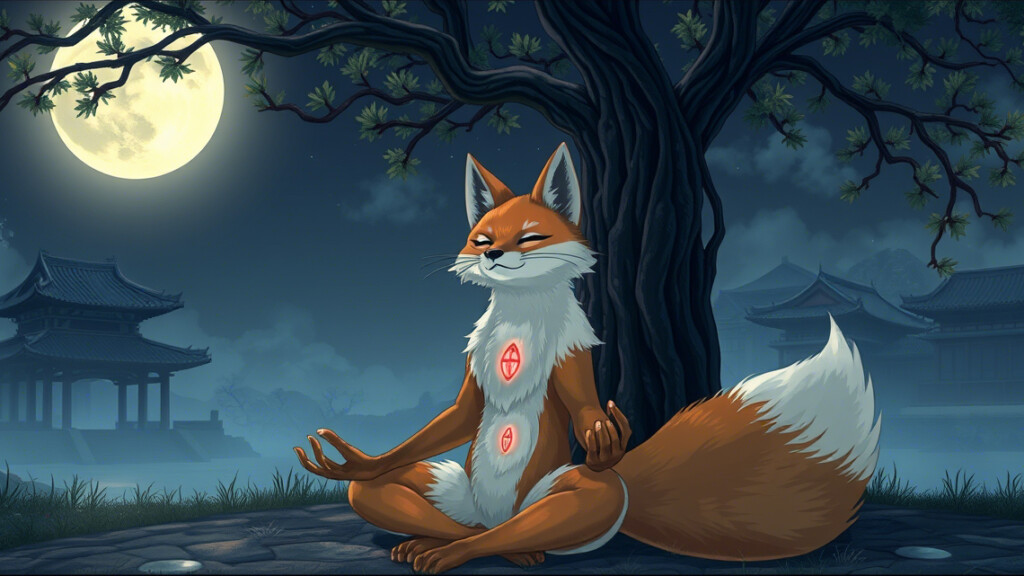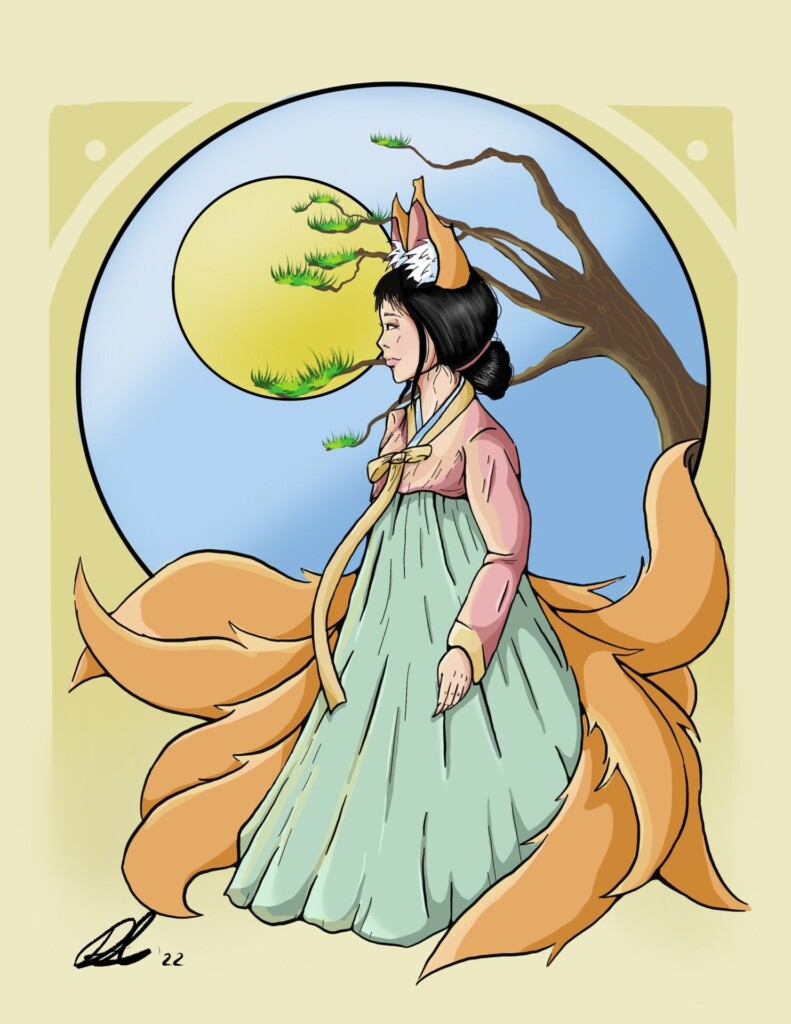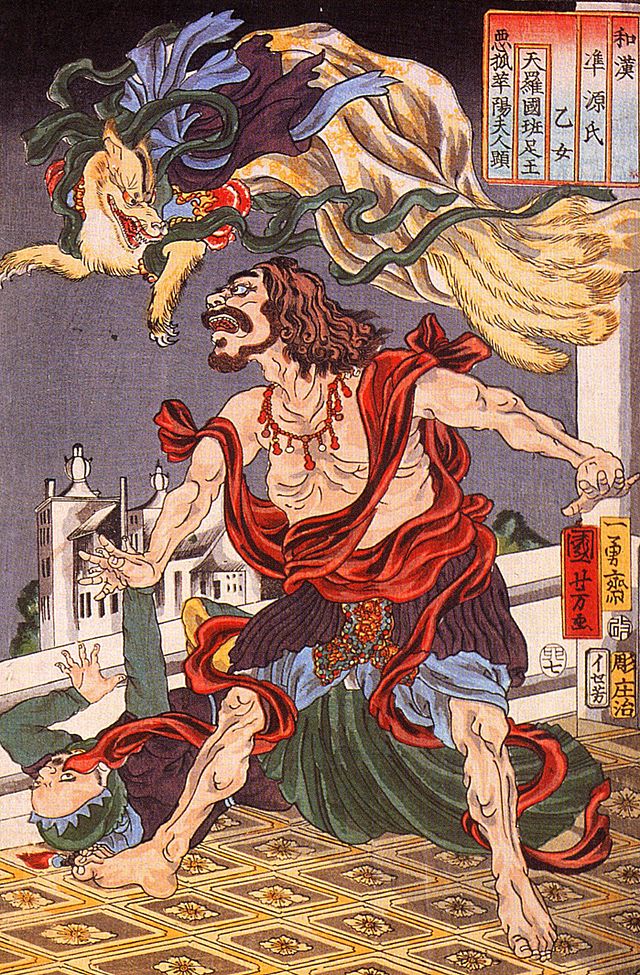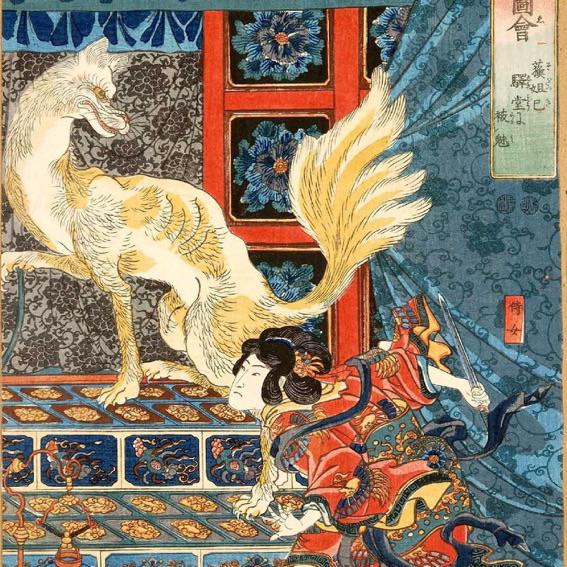Since ancient times, deep within the dense forests of the Korean Peninsula, people have whispered tales of a mysterious creature—Gumiho (구미호), the nine-tailed fox. In folklore, it is said to be a fox that has lived and cultivated its powers for hundreds of years, capable of transforming into a human, often appearing as a breathtakingly beautiful woman with an eerie gaze and a cryptic smile.

But Gumiho is not just a simple monster. It is a being that exists on the thin line between good and evil, between allure and death. In many legends, it is depicted as a predator, killing humans and devouring their livers or hearts to maintain its supernatural strength. Yet, some stories claim that if a Gumiho can refrain from killing for a long enough time, it can become human.
Origins of the Gumiho Legend
When did Gumiho first appear? The oldest Korean records, such as the Samguk Sagi (삼국사기, History of the Three Kingdoms, 12th century), already mention the nine-tailed fox, influenced by ancient Chinese mythology. However, over time, Gumiho evolved into a distinct entity in Korean culture, characterized by tales filled with tragedy and mystery.
Terrifying Tales from Historical Records
In Samguk Yusa (삼국유사, Memorabilia of the Three Kingdoms, 13th century), one story tells of a Gumiho living in the royal palace of Silla, disguising itself as a beautiful woman to seduce the king. When discovered, it transformed back into a fox and fled, leaving strange markings on the palace walls.
Another legend passed down through generations tells of a man who encountered a woman late at night. She asked him to carry her home, but as they walked, he glimpsed a fox’s tail peeking out from beneath her robe. Overcome with terror, he fled—but Gumiho pursued him, tearing him apart.
These stories reflect ancient fears of supernatural forces and the cautionary belief that things too beautiful to be true often hide deadly secrets.
The Fox and the Dream of Becoming Human
However, Gumiho is not always portrayed as a terrifying predator. Some legends tell of nine-tailed foxes yearning to become human, even falling in love with mortals. One of the most well-known stories speaks of a Gumiho who loved a man and vowed to live for 1,000 years without consuming human flesh to transform into a real woman. But in the final year, she was betrayed by humans, forcing her to abandon her dream and live forever as a cursed creature.

This tragic tale has inspired many modern adaptations, where Gumiho is no longer just a hunter but also a victim of fate—trapped between instinct and the desperate desire for love.
Gumiho vs. Fox Spirits in China and Japan
Gumiho is not the only nine-tailed fox in East Asian mythology. China has the Huli Jing (狐狸精), and Japan has the Kitsune (狐). Though they share common origins, each culture has shaped its own distinct version of the mythical fox:
| Characteristic | Gumiho (Korea) | Huli Jing (China) | Kitsune (Japan) |
|---|---|---|---|
| Nature | Often depicted as a dangerous entity that devours human livers/hearts but may become human if it refrains from killing. | Can be good or evil. Some Huli Jing seduce men to drain their life force, while others are worshiped as divine beings. | Mostly portrayed as intelligent spirits, sometimes tricksters but also protectors of humans. |
| Abilities | Shape-shifting into a beautiful woman, supernatural powers, immortality, ability to manipulate dreams. | Shape-shifting into humans, often associated with Daoist magic and seduction. Some can ascend to become celestial beings. | Shape-shifting into humans, control over fox fire (kitsunebi), mystical abilities. |
| Symbolism | Desire, danger, the blurred line between good and evil. | Intelligence, seduction, duality of spirit and demon. | Playful spirits, sometimes loyal to humans. |
| Presence in Culture | Predominantly appears in Korean folklore and modern literature. | Prominent in Daoist traditions and ancient Chinese literature. | Widespread in Japanese folklore and art. |
These differences reveal how each culture perceives the fox spirit—while Huli Jing fluctuates between deity and demon, and Kitsune aligns with nature spirits, Gumiho carries a deep sense of tragedy, bound by both its instincts and fate.
Gumiho in Modern Films and Television
Today, Gumiho is no longer confined to ancient legends—it has become a staple of modern Korean cinema and television, evolving into complex characters that reflect contemporary interpretations of its myth. Some notable works include:
- My Girlfriend is a Gumiho (2010) – A romantic fantasy drama about an innocent yet powerful Gumiho who falls in love with a human but struggles against her fox nature.
- Tale of the Nine-Tailed (2020) – A modern fantasy series reimagining Gumiho as an immortal, time-traveling entity searching for love.
- The Thousandth Man (2012) – A tragic tale about a Gumiho who must consume 1,000 human livers to become human but faces heartbreak when she falls for her final target.
These adaptations reflect a shift in how Gumiho is perceived—not merely as a predator, but as a being torn between love and survival, between monster and human.
The Legend That Lingers in the Shadows
Gumiho is a creature of contradictions—both enchanting and terrifying, both hunter and dreamer. It is not just an ancient legend but a living cultural symbol, continuously reimagined and reborn through generations.
And so, if one day you encounter a person with an otherworldly gaze and a fleeting, ghostly smile, would you dare to glance behind them—to see how many tails are hidden in the darkness?
Images of Gumiho in Korean Culture / Museums




